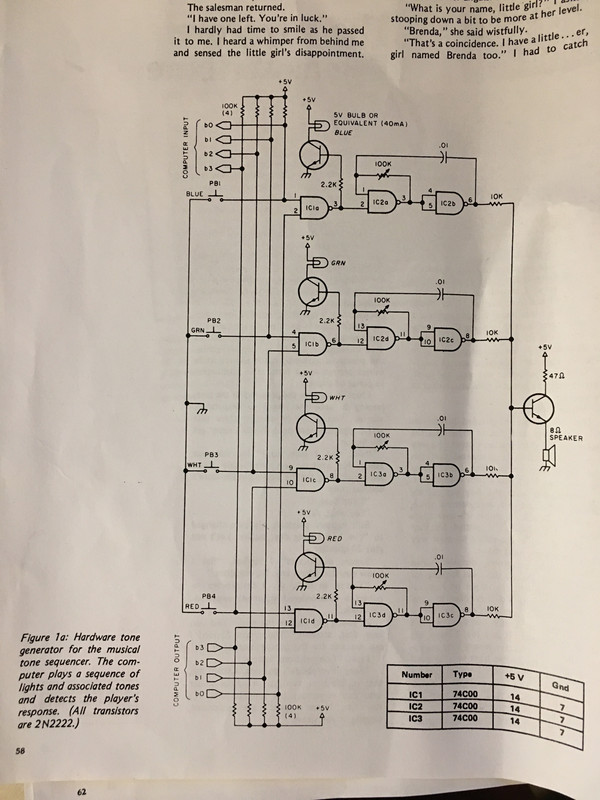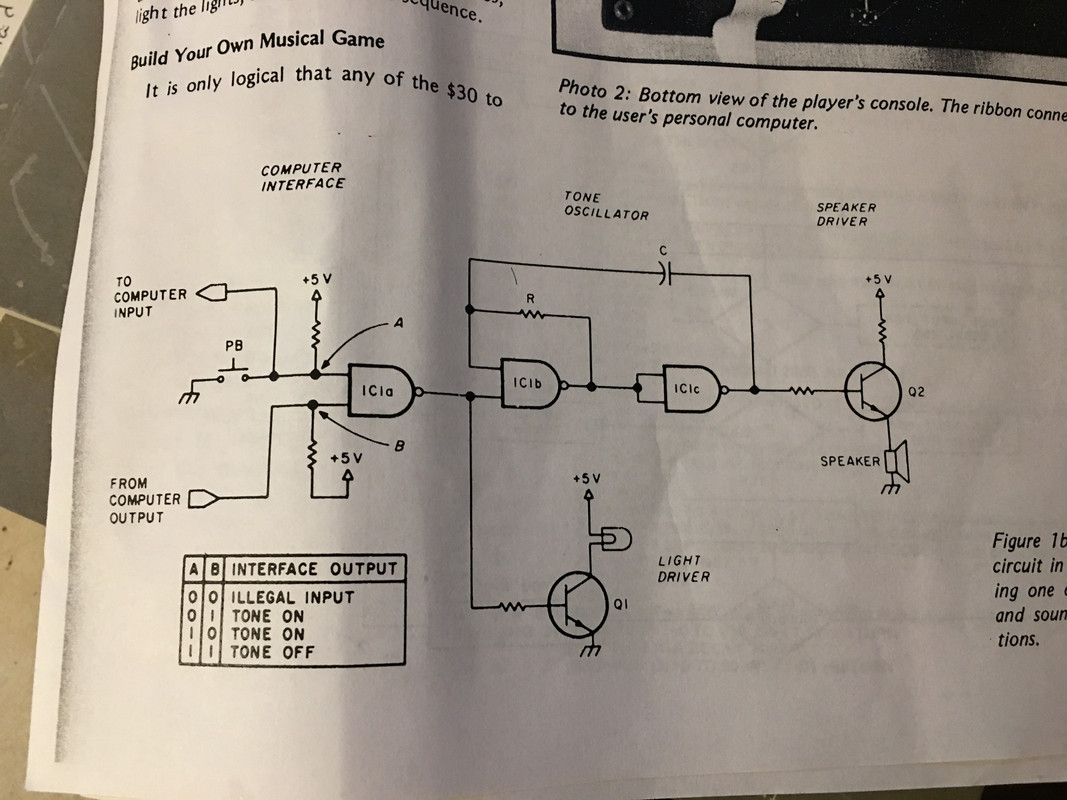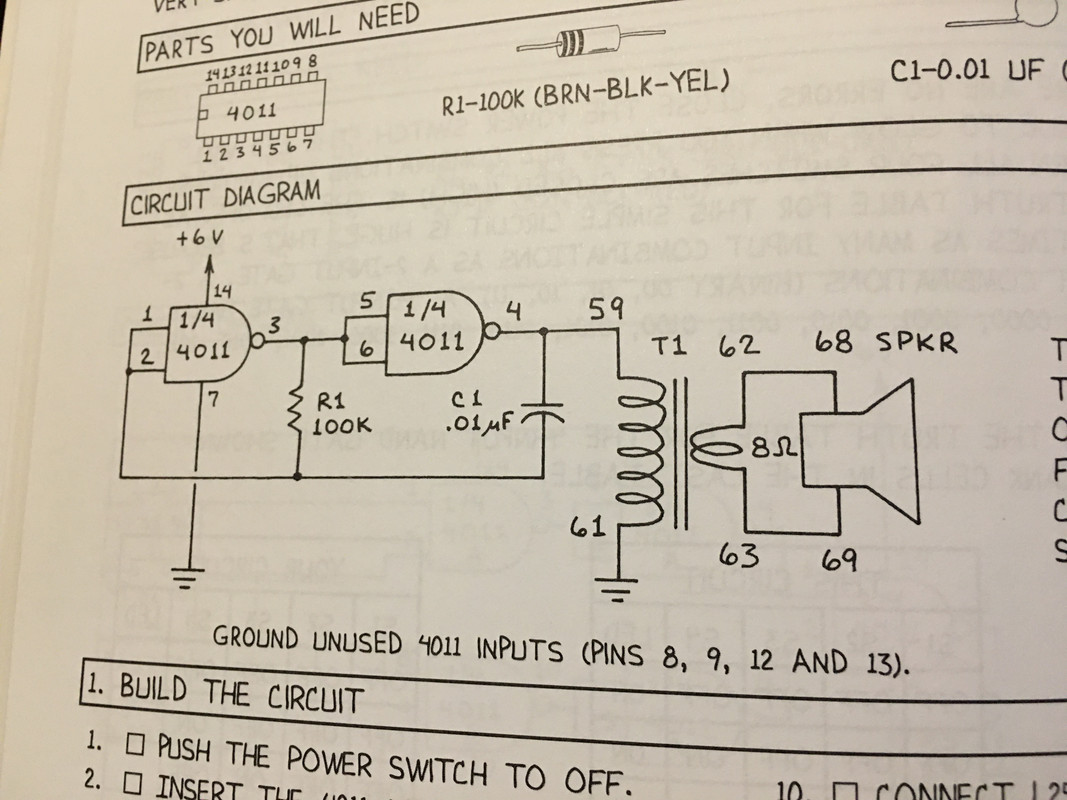Hey again folks, just when I think I am getting somewhere I find something that makes me reevaluate if I have been learning  ! So I am back with yet another question!
! So I am back with yet another question!
I was looking at making a "Simon" type toy from scratch using an Arduino and other components. I got the idea reading an early Ciarcia's Circuit Cellar circa 1980-81 where he made one of these and was thinking of doing it with more recent components.
Anyway, in the article he presents a schematic of the hardware tone generator he built for the game and I thought "Cool I can understand this!"... or so I thought lol! What I am lost on is the charging of the capacitor in the oscillator circuit (below, and then a detailed view below that):
I studied this quite a while and realized I had seen it before in Forrest Mims' Digital Logic Projects:
and his explanation:
Where I am lost is how C1 (C in Ciarcia's circuit) is charging. So two questions:
1) I would think the positive side of C1 would be accumulating positive charge, but if pin 4 is low then nothing is going to the positive side of C1?
2) The first answer in this discussion I found of this very circuit says "C1 will get charged through R1.By "charged" i mean lower terminal of C1 will get increasingly positive." However, the "lower terminal" is the negative polarity side of the capacitor - so how is it accumulating a positive charge? Isn't putting a positive charge on the negative side of a capacitor a Very Bad Thing?
I know I am (again) missing something very basic here! I have looked at this for 3 days now and not made progress...Thanks for any help on this!
Robert Opalko





